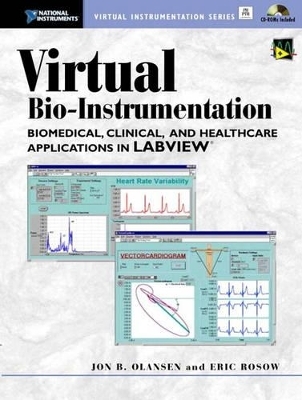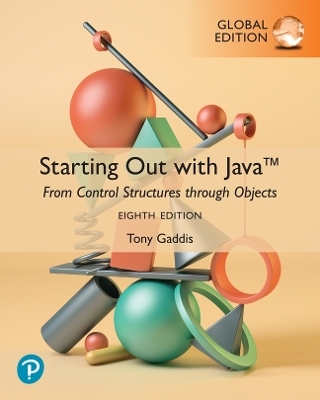
Virtual Bio-Instrumentation
Prentice Hall
978-0-13-065216-4 (ISBN)
- Titel ist leider vergriffen;
keine Neuauflage - Artikel merken
Bringing the power of virtual instrumentation to the biomedical community.
Applications across diverse medical specialties
Detailed design guides for LabVIEW and BioBench applications
Hands-on problem-solving throughout the book
Laboratory, clinical, and healthcare applications
Numerous VI's with source code, plus several demos, are available on the book's web site
Virtual instrumentation allows medical researchers and practitioners to combine the traditional diagnostic tools with advanced technologies such as databases, Active X, and the Internet. In both laboratory and clinical environments, users can interact with a wealth of disparate systems, facilitating better, faster, and more informed decision making. Virtual Bio-Instrumentation: Biomedical, Clinical, and Healthcare Applications in LabVIEW is the first book of its kind to apply VI technology to the biomedical field.
Hands-on problems throughout the book demonstrate immediate practical uses
Examples cover a variety of medical specialties
Detailed design instructions give the inside view of LabVIEW and BioBench applications
Both students and practicing professionals will appreciate the practical applications offered for modeling fundamental physiology, advanced systems analysis, medical device development and testing, and even hospital management and clinical engineering scenarios.
Jon B. Olansen began his career as a NASA flight controller, supporting 32 Space Shuttle missions. He obtained his Ph.D. as a National Instruments Fellow at Rice University, where he specialized in biomedical experimentation in electrophysiology and cardiovascular hemodynamics. He has since returned to NASA, representing the Astronaut Office in the design, development, and operation of human life sciences experiments destined for the International Space Station. Eric Rosow has over 16 years of experience in biomedical engineering and life science applications of virtual instrumentation. He is Director of Biomedical Engineering at Hartford Hospital, where he introduced virtual instrumentation into the hospital environment. He is also a co-founder of Premise Development Corporation, a software company for the biomedical and healthcare industries, and has co-developed numerous virtual instrument solutions for leading healthcare institutions throughout the world.
Preface.
I. PRELIMINARIES.
1. Introduction.
General Goals of VBI Applications. Educational Objectives. Professional Objectives. Previous Knowledge Requirements. Organization of the Book. Book Conventions. What This Book Is. What This Book Is Not. Research and Clinical Applications. Medical Device Development and Test Applications. Healthcare and Informatics Applications. Advanced Applications. Contents of the CD-ROMs.
2. Basic Concepts.
Data Acquisition (DAQ) Basics. LabVIEW(tm) Basics. BioBench(tm) Basics. Independent Solution Articles. Ensemble Averaging of Physiologic Signals: A LabVIEW-based Software Package Assisting the Analysis of Cyclic Data.
II. RESEARCH APPLICATIONS.
3. Biopotentials.
Typical Laboratory Workstation. Lab Layout and Design. Generic Instrumentation/Data Acquisition Issues. Electroneurology. Physiological Basis. Experiment Setup. Dissection. Nerve Chamber Preparation. Generic VI Development. Experiment Descriptions. Troubleshooting the Nerve Recording. Neuromuscular Electrophysiology (Electromyography). Physiological Basis. Experiment Setup. Experiment Descriptions. Troubleshooting the Nerve-Muscle Preparation. Cardiac Electrophysiology (Electrocardiography). Physiological Basis. Experiment Descriptions. Independent Solution Articles. LabVIEW Automates Brain Wave Experiments in the Neurophysiology Lab. Using LabVIEW for Physiological Research.
4. Cardiopulmonary Dynamics.
Typical Laboratory Workstation. Generic Instrumentation/Data Acquisition Issues. Pulmonary Function. Physiological Basis. Experiment Setup. Pulmonary DAQ System Operation. Lung Tissue Viscoelastance. Experiment Setup. Experiment Description. Cardiovascular Hemodynamics. Physiological Basis. Canine Cardiovascular Pressure Measurements. A Cardiovascular Pressure-Dimension Analysis System. System Setup. Data Acquisition and Analysis. Clinical SigniÞcance. Independent Solution Articles. LabVIEW: Our Choice for Cardiothoracic Research. SpiroPro: A Novel Spirometer Software Application for Lung Function Testing.
III. CLINICAL APPLICATIONS.
5. Cardiopulmonary Applications.
The Cardiopulmonary Measurement System (CMS). Background. The System. How the Cardiopulmonary Measurement System Works. Clinical SigniÞcance. Summary. Validation of a LabVIEW-based Vibrotactile. Stimulation System to Treat Apnea of Prematurity. Applications. The VTS System. Study Protocol. Results. Discussion. IntelliVent(tm) Data Logger: A Real-time Research Tool for Data Acquisition, Analysis, and Display of Ventilatory Parameters. Applications. Hardware. Independent Solution Articles. A Virtual Instrument for Critical Care Monitoring of Newborn Patients with Hypoplastic Left Heart Syndrome Following Norwood Operation Using LabVIEW. Biomedical Patient Monitoring, Data Acquisition, and Playback with LabVIEW.
6. Machine Vision and Motion Control Applications.
Overview. Machine Vision DeÞned. Step 1-Conditioning. Step 2-Acquisition. Step 3-Analysis. Computer Technologies for Machine Vision: Making Machine Vision Easier. Machine Vision Functions. Machine Vision Application Development. Application of Machine Vision Functions. Color Analysis in Machine Vision. Color Pattern Matching. Color Pattern Matching Features. Color Location. Cameras and Interfacing. Interfacing with Digital Cameras. Parallel Digital Cameras. Camera Link Cameras. IEEE-1394 (Firewire) Cameras. Interchangeable Cameras. Future Camera Technologies. Camera Advisor. Motion Systems. Example: Designing a Motion Control Project. A LabVIEW-Based Wound Management System. Purpose of System. Advantages of System. SigniÞcance. Indicated Population. BeneÞts of Wound Management Technology. Independent Solution Articles. IMAQ and LabVIEW Automate the Study of Eye Motion. Endothelial Evaluation of Corneal Transplants by Knowledge-based Digital Image Processing. Counting Particles or Cells Using IMAQ Vision.
IV. MEDICAL DEVICE DEVELOPMENT APPLICATIONS.
7. Medical Device Testing.
The EndoTester(tm)-A Virtual Instrument-Based Quality Control and Technology Assessment System for Surgical Video Systems. Introduction. Materials and Methods. Endoscope Tests. Results. Discussion. FluidSense Innovative IV Pump Testing. Introduction. The Test System. Training Emulator. Summary. Independent Solution Articles. LabVIEW and DAQ Board Accelerate Development of Medical Diagnostic Instruments. Measuring Medical Pump Accuracy with LabVIEW. Reducing Test Time of Implantable Pacemaker Hybrid Circuits with LabVIEW. Hybrid Evaluation and Development Using LabVIEW for Windows. LabVIEW and SCXI Perform Automatic Test on Ventilators.
8. LabVIEW in a Regulated Environment.
Key Characteristics and Terminology. Biomedical Product Testing. LabVIEW Scalability. The Keys to a Successful Validation Program. Development Architecture. Guiding Principles. Testability. Modularity. Software Recycling. Consistent Baseline and Directory Structure. The Development Process. Project Management. ConÞguration Management. Coding Standards. Automation Tools. Code Analysis (Static Tests). Software Metrics. Metrics Visualization with LabVIEW. Applying Metrics Visualization. Inspecting Documentation Completeness. Requirements Traceability. VeriÞcation and Validation Test. Unit Testing. Automating Unit Testing with OverVIEW. Simulation. Full Project Testing and Regression Testing. Documenting the Project. Theory of Operation. Generating Validation Reports. Project Release Report. VeriÞcation after Release-Controlling and Maintaining the Software. Summary. Independent Solution Articles. Operating a Commercial Medical Device with CertiÞed, LabVIEW(tm)-Based Software.
V. HEALTHCARE INFORMATION MANAGEMENT SYSTEMS.
9. Medical Informatics.
DeÞning Medical Informatics. Computers in Medicine. Electronic Medical Record. Computerized Physician Order Entry. Decision Support. Information Retrieval. Medical Imaging. Patient Monitoring. Medical Education. Medical Simulation. Managing Disparate Information. ActiveX. ActiveX Data Objects (ADO). Dynamic Link Libraries. Database Connectivity. Integrated Dashboards. Independent Solution Articles. EWICUM: An Early Warning Intensive Care Unit Monitoring System.
10. Executive Dashboards.
Overview. The Need for Real-time Performance Measurement. Data Management. Metrics That Matter-Performance Indicators in Healthcare. Why Measure? Driving the Need to Measure Quality. Data. Balanced Scorecards. Barriers. PIVIT(tm)-Performance Indicator Virtual Instrument Toolkit. Trending, Relationships, and Interactive Alarms. Medical Equipment Risk Criteria. Peer Performance Reviews. Executive Information Dashboard. The Bed Management/Census Control Dashboard. Overview. Hospital Summary. How the Bed Management Dashboard Works. Patient ConÞdentiality. Summary. Independent Solution Articles. The Physician/Network Assessment Tool: A Business Intelligence and Data Mining Tool for Healthcare Insurance Claims. The Examinator: A LabVIEW-based Exam Maker, Taker, and Grader.
VI. ADVANCED TOPICS.
11. Mathematical Modeling/Simulation of Physiologic Systems.
Cardiovascular System Modeling and Simulation. Theoretical Basis. Model Development. Heart Model. Circulatory Model. Experimental Measurements. Computational Aspects. Parameter Estimation and Sensitivity Analysis. CardioPV Program Development. Pulmonary Mechanics Modeling and Simulation. Theoretical Basis. Model Development. Experimental Measurements. Lung Tissue Model Parameter IdentiÞcation. PulmPV VI Development. PulmPV Parameter IdentiÞcation. Integrated Cardiopulmonary Dynamics Modeling and Simulation. Background. Human Cardiovascular Model Development. Computational Aspects. CardioPulm VI Development.
12. Virtual Bio-Instrumentation, LabVIEW(tm), and the Internet.
Access to Biomedical Virtual Instruments Anywhere. Why Use Networked Virtual Bio-Instrumentation? Classifying an Internet-enabled Virtual Bio-Instrumentation System. Internet Technologies and Virtual Instrumentation. How Does Information Get Transferred from the Server to the Client? Choosing a Technical Solution with LabVIEW. TCP/IP. UDP. The VI Server: Remotely Manipulating Vis. DataSocket. The LabVIEW Web Server. Controlling VIs Over the Web. CGI and HTML Forms. Java Applets. ActiveX Controls. XML. The Wireless Web: WAP and WML. Designing VBI for Remote Network Access. Web versus VI Clients. DataSocket versus VI Server. Enterprise Connectivity: The Big Picture.
13. Future Potential.
Independent Solution Article. Telerobotic Camera System for Operating Rooms.
Appendix.
Typical Math Model Parameter Values.
Index.
About the Authors.
| Erscheint lt. Verlag | 3.1.2002 |
|---|---|
| Verlagsort | Upper Saddle River |
| Sprache | englisch |
| Maße | 178 x 235 mm |
| Gewicht | 957 g |
| Themenwelt | Mathematik / Informatik ► Informatik ► Web / Internet |
| Medizin / Pharmazie | |
| Naturwissenschaften ► Biologie | |
| Technik ► Medizintechnik | |
| ISBN-10 | 0-13-065216-4 / 0130652164 |
| ISBN-13 | 978-0-13-065216-4 / 9780130652164 |
| Zustand | Neuware |
| Haben Sie eine Frage zum Produkt? |
aus dem Bereich
